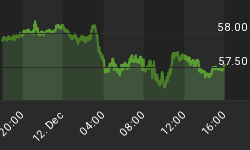How $1-million can disappear
The bursting of the "debt bubble" which started in 2008 is far from over.
It's the financial story of our age and it's happening before our eyes. The full scope is hard to keep up with because it's unfolding at various levels.
The top level is the sovereign debt crisis:
-
National governments: Several in Europe and even the U.S.
-
State and local governments: services slashed; vendors waiting to get paid.
-
Corporations: financial institutions at home and abroad remain in questionable health. PIMCO Chief tells Bloomberg (9/13) "We're getting close to a full-blown banking crisis in Europe." And CNBC reports (9/14) "Moody's Investors Service said...it downgraded the credit ratings of Societe Generale and Credit Agricole."
-
Individual Households: "under-water" mortgages; "new conservatism" toward spending.
As the credit bubble continues to deflate, the evaporation of vast wealth may follow on a historic scale. Please read this excerpt from the second edition of Conquer the Crash (pp. 94-95):
"...a lender starts with a million dollars and the borrower starts with zero. Upon extending the loan, the borrower possesses the million dollars, yet the lender feels that he still owns the million dollars that he lent out. If anyone asks the lender what he is worth, he says, 'a million dollars,' and shows the note to prove it. Because of this conviction, there is, in the minds of the debtor and the creditor combined, two million dollars worth of value where before there was only one. When the lender calls in the debt and the borrower pays it, he gets back his million dollars. If the borrower can't pay it, the value of the note goes to zero. Either way, the extra value disappears...
"The dynamics of value expansion and contraction explain why a bear market can bankrupt millions of people. At the peak of a credit expansion or a bull market, assets have been valued upward, and all participants are wealthy -- both the people who sold the assets and the people who hold the assets. The latter group is far larger than the former, because the total supply of money has been relatively stable while the total value of financial assets has ballooned. When the market turns down, the dynamic goes into reverse. Only a very few owners of a collapsing financial asset trade it for money at 90 percent of peak value. Some others may get out at 80 percent, 50 percent or 30 percent of peak value. In each case, sellers are simply transforming the remaining future value losses to someone else. In a bear market, the vast, vast majority does nothing and gets stuck holding assets with low or non-existent valuations. The 'million dollars' that a wealthy investor might have thought he had in his bond portfolio or at a stock's peak value can quite rapidly become $50,000 or $5000 or $50. The rest of it just disappears. You see, he never really had a million dollars; all he had was IOUs or stock certificates. The idea that it had a certain financial value was in his head and the heads of others who agreed. When the point of agreement changed, so did the value. Poof! Gone in a flash of aggregated neurons. This is exactly what happens to most investment assets in a period of deflation."

Now is the time to prepare for a deflationary depression by reading the 90-page Free Report titled Deflation Survival Guide. This eBook is now updated with Robert Prechter's most important analysis and forecasts regarding deflation.
You can read this free financial guide right away as a Club EWI Member (membership is free). Joining Club EWI is easy and just takes moments. See the Deflation Survival Guide on your screen by following this link>>
This article was syndicated by Elliott Wave International and was originally published under the headline Evaporation of Wealth on a Vast Scale. EWI is the world's largest market forecasting firm. Its staff of full-time analysts led by Chartered Market Technician Robert Prechter provides 24-hour-a-day market analysis to institutional and private investors around the world.
















